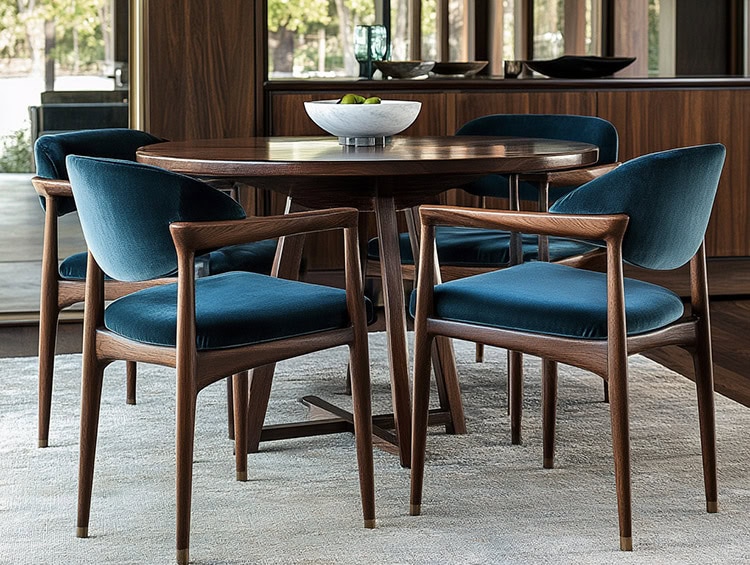Decorating a home can be an exciting time, yet many homeowners avoid it. Often times, the reasoning comes down to lack of confidence and fear of making a costly mistake. While this is completely understandable, it shouldn’t deter someone from having a home interior that makes them happy.
Obviously, the goal of decorating a home is to get it right the first time–but it doesn’t always work out that way. And that’s OK. In many cases, there’s a remedy that can improve the space. The key, however, is to understand what some common decorating mistakes are and how to avoid them in the first place. Here are 10 that can help you get it right.

-
Choosing the wrong sized furniture.
Scale and proportion are necessary when it comes to decorating–especially when dealing with furniture. The pieces within a room should have similar proportions. Heights will vary of course, but try not to drown out pieces with too many oversized furnishings. Pieces should look as though they blend harmoniously.
-
Making everything match.
The idea of matching is often focused on too heavily. Instead of having everything go together perfectly, approach your decorating as you would your clothing. Select textiles, furnishings and finishes that work together without being boring. Reflect your personality in an interesting, yet unified way.
-
Buying an entire furniture set.
Although this sort of ties in with mistake 1 and mistake 2, it warrants its own point. One big mistake people make is buying a matching furniture set. Not that they aren’t nice, but they aren’t unique. Instead of outfitting your living room with a matching sofa and loveseat or your bedroom with a matching suite, consider adding a more personal flavor. You can still achieve a coordinated look on your own that will provide much more appeal than a one-size-fits-all set that’s been coordinated for you.
-
Buying everything from a single store.
One-stop shopping is pretty popular these days, but that doesn’t mean you should approach your furniture shopping in that manner. When you furnish an entire house, or even a single room from the same store, you’ll end up with a space that lacks visual interest. To avoid a cookie-cutter home, opt to shop around different boutiques or online stores that carry a variety of pieces from different manufacturers and brands. This will keep your home looking more uniquely tailored to your preferred decorating style.
-
Placing everything against the wall.
When everything is pushed up against the wall, you lose the sense of flow. There will be times the wall will be an ideal place, but it’ll be rare. Take traffic flow into serious consideration and focus on pulling pieces closer to the center of the space. Additionally, creating smaller groupings is something else to keep in mind.
-
Picking paint colors first.
There are so many paint colors available, which makes it easier to find paint complimentary to your furniture than the other way around. Be sure to pick all of your fabrics and finishes first, taking samples to the paint store when able. When the time does come for paint, test several colors, paying attention to how light affects it over a 24-hour period.
-
Hanging art too high.
Believe it or not, where you hang things on the wall is important. As a general rule, wall art, mirrors, etc., should be hung at eye level. You nor your guests should have to strain a neck muscle in order to see the art on the walls.
-
Neglecting the focal point.
A focal point will draw the eye upon entering a room. Without one, there just doesn’t seem to be much order within the space. If you don’t have a fireplace, or would prefer to use something other than the fireplace, consider something like a unique piece of furniture, a large piece of artwork, or a window.
-
Having poor lighting.
Lighting is a critical element of design, yet it often doesn’t get much thought. If your home has lots of natural light, don’t block it out. You can always add sheers for privacy. If you don’t have a lot of natural light, install extra lighting where you can, and install a dimmer for areas where you’d like more control. The main thing to remember is that one ceiling-mounted light in the center of the room is not enough. Layering lights throughout the room is the way to go.
-
Buying the wrong sized rug (or not using one at all).
Rugs are a key element when it comes to decorating a room. Yes, they serve a functional purpose of protecting floors and offering comfort for your feet, but they also pull a design together, ground the space, and define areas in homes with open-concept floor plans. If you aren’t using a rug (or rugs) consider making that a priority. If you are currently using rugs throughout your home, make sure that they are the right size. Rugs should extend under all key pieces of furniture–if they don’t, you need to go bigger (note: it is OK if the back legs of large pieces hang off). But don’t toss your smaller rugs if you love them. Simply layer them on top of a rug that’s bigger in size.
Ready to start your next decorating project off on the right foot? Stop by one of our showrooms or browse through out selections of fabric, pillows, and rugs that can help give your home a beautiful transformation.

















